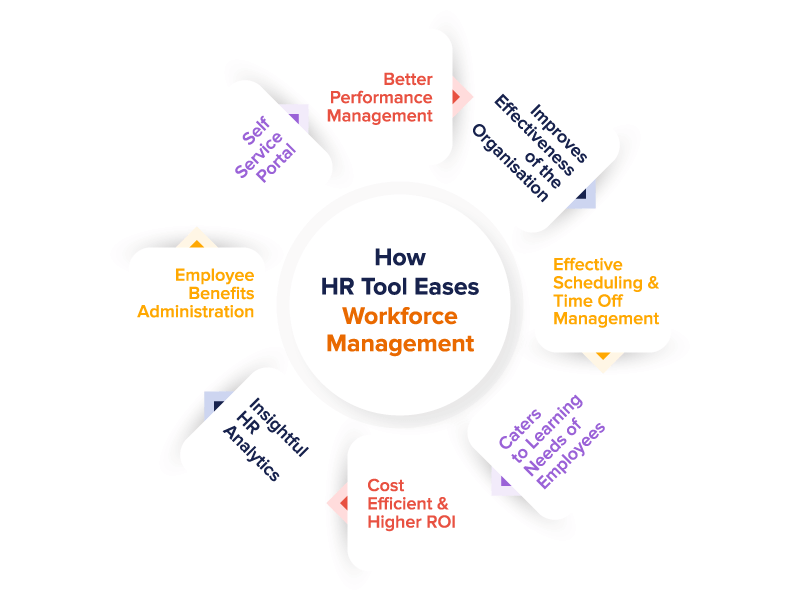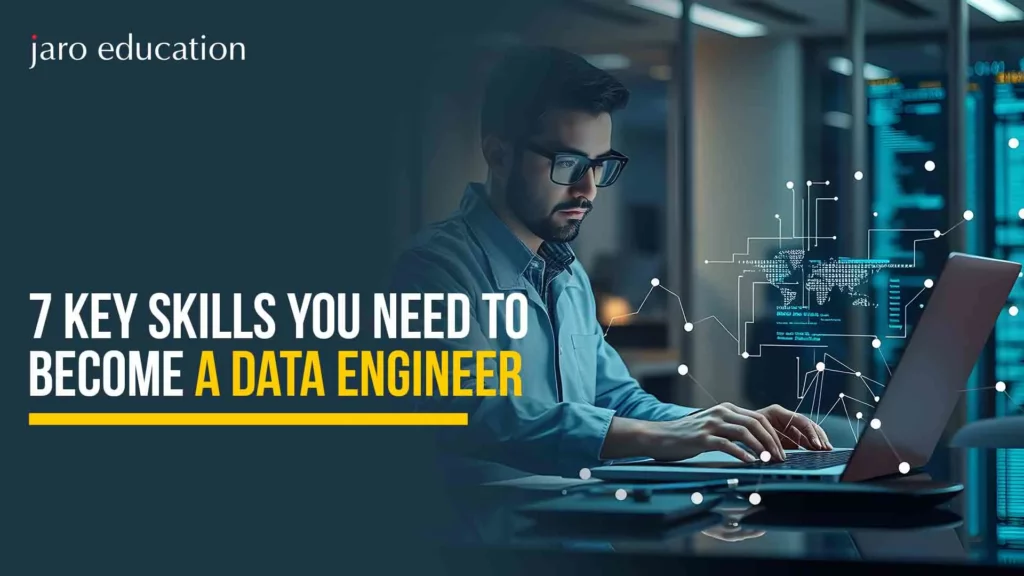Building Your HR Analytics Toolkit: Essential Skills for Today’s HR Professionals
Table of Contents

- jaro education
- 16, May 2024
- 10:20 am
From finding the best talent to fostering a positive work environment, HR professionals have more responsibilities than ever before. With this change in trends, HR analytics has become a key requirement, giving HR teams the power to use data for smarter decisions that benefit the whole company. These tools help HR professionals simplify tasks, improve talent management, and fuel company growth.
But with so many HR analytics options out there, it can be tough for HR professionals to pick the right one. That’s why we’ve put together a helpful guide to the top 9 HR analytics tools. With this blog, HR experts will be able to explore their features and advantages giving HR teams the knowledge to choose wisely.
What are HR Analytics Tools?
HR analytics tools are special software that helps companies analyze HR data to make smart decisions about their employees. These tools give insights into important HR areas like hiring, performance reviews, keeping staff, and keeping them engaged. They’re built to handle lots of data and come with cool features like graphs, predicting things, and making detailed reports.
These tools help businesses understand their human resources better and boost the returns on their investment in personnel. Managers can use predictive features to anticipate how regulations and structural changes might impact employee morale and productivity. They can also assess how potential changes to workplace culture might affect performance. Additionally, some HR analytics solutions offer features to streamline the hiring process and find individuals who fit well with a company’s culture. Overall, HR analytics software can greatly enhance the efficiency of managing human resources.
Benefits of HR Analytics Tools
Here are some non-negotiable benefits of HR analytics tools in an organization:

*factohr.com
Using Evidence-Based Practices in HR
In the past, HR management often relied on trends, biases, or quick fixes. But now, evidence-based HR focuses on making decisions backed by data and research.
With HR analytics, organizations can make HR choices based on facts and evidence, rather than just intuition. For instance, PNC Bank’s HR team used analytics to understand the risks of their incentive plans and developed a plan to deal with those risks. Similarly, Kraft Heinz used analytics during a takeover bid to analyze networks and make smart choices.
Enhancing Recruitment and Talent Acquisition
HR analytics helps streamline recruitment processes by looking at data on where candidates come from, how long it takes to fill positions, and the quality of hires. This helps organizations pinpoint the most effective recruitment channels and adjust their strategies accordingly.
Improving Employee Performance and Productivity
By analyzing performance metrics, organizations can spot top performers, address performance issues, and offer targeted training. HR analytics supports making informed decisions about performance management.
Creating Fair Compensation and Benefits
Insights from data help organizations design fair compensation structures and benefits packages. They can spot pay gaps and ensure everyone gets fair rewards.
Facilitating Strategic Workforce Planning
HR analytics assists in predicting future workforce needs, planning for succession, and identifying key roles. This ensures that organizations have the right people in the right jobs. It can be beneficial for organizations on many levels and to be updated with trends, learning HR analytics as a professional could be the right decision.
To deep dive into HR analytics, you must enroll in the Executive Development Program in HR Analytics – XLRI Jamshedpur. This course is about understanding data to make better HR decisions. You’ll learn the basics of analytics, including different types (descriptive, predictive, and prescriptive) with the help of SPSS and MS Excel. You’ll get better at using data to manage people and solve real-world challenges.
Best HR Analytics Tool Kit
IBM ILOG CPLEX Optimizer
BM ILOG CPLEX Optimizer is a powerful HR analytics tool designed to tackle intricate optimization challenges, aiding businesses in making informed decisions by pinpointing the most efficient solutions to complex problems.
This software leverages advanced algorithms to handle linear and nonlinear programming, mixed-integer programming, and global optimization tasks. Its applications span across logistics, supply chain management, scheduling, and resource allocation.
Here’s how it can assist in HR analysis:
- Workforce Planning: With optimization models, HR can figure out the best way to assign staff across various departments, projects, or locations to maximize efficiency.
- Scheduling: CPLEX can tackle tricky scheduling issues, making sure shifts and workloads are fair and follow labor laws and contracts.
- Talent Acquisition: It helps optimize recruitment tactics to attract top-notch candidates while keeping costs down.
- Improving Retention: It helps in examining and enhancing employee retention initiatives to identify key incentives that can serve diverse employee groups.
Microsoft Power BI
Microsoft Power BI is a robust business intelligence and data visualization solution designed to empower users to connect, analyze, and share insights gleaned from diverse data sources. It catalyzes organizations, transforming raw data into dynamic and visually compelling reports and dashboards.
It helps with HR analysis by offering a complete platform for visualizing data and business intelligence. It allows HR professionals to make interactive reports and dashboards that give insights into different HR metrics like recruitment, employee performance, turnover rates, and more. Using Power BI, HR teams can bring together data from different sources, identify trends, and make decisions based on data to improve how they manage their workforce, refine their hiring strategies, and boost efforts to keep employees.
Qlik
Qlik is a versatile business intelligence and data visualization solution, empowering users to craft engaging visualizations and reports with ease. At its core, Qlik presents a distinctive data discovery and exploration platform, enabling seamless connectivity and analysis across diverse data sources.
Central to Qlik’s prowess is its “associative data model,” fostering natural data exploration. Users navigate data intuitively, leveraging selections and filters to unveil real-time relationships between disparate data points. This fosters effortless data exploration, facilitating the discovery of insights concealed within raw data.
Qlik improves HR functions by offering a dynamic analytics platform that promotes data-driven decision-making. It provides interactive dashboards to monitor and analyze HR key performance indicators (KPIs), assisting in talent acquisition, workforce management, and performance assessment. Using Qlik, HR teams can easily visualize intricate data from various sources, uncover valuable insights for strategic planning, and cultivate a culture centered around data within the organization.
R
R is a leading programming language and environment designed specifically for statistical analytical inquiries. It specializes in performing advanced analytics on large datasets with high efficiency. As a result, it provides significant support for a wide range of third-party tools and approaches, notably in the context of HR analytics applications.
Here are the ways R can be helpful in HR tasks:
- Data Management: R is capable of managing large datasets, which is crucial for handling employee information, performance metrics, and other HR-related data effectively.
- Statistical Analysis: It offers a variety of statistical methods to analyze HR data, including regression analysis, which helps in understanding the factors influencing employee turnover.
- Visualization: With its extensive range of libraries, such as ggplot2, R enables the creation of clear and interactive visualizations to represent HR metrics effectively.
Python
Python is a computer language with an important role in the data science field. The flexibility of it has led to parallels with R, another popular language in this industry, stirring debate among data scientists about which tool will eventually prevail.
While R excels at statistical analysis and has a thriving community focused on statistics and visualization, Python provides a comparable breadth of functions while being more approachable to beginners. This accessibility has contributed to its popularity among both beginners and seasoned experts.
Here is how Python can leverage HR analysis:
- Data Analysis: Python’s data analysis tools like pandas and NumPy empower HR professionals to handle and examine vast datasets. This helps in gaining insights into employee performance, turnover rates, and other important metrics.
- Automation: Python can automate repetitive tasks such as data entry, generating reports, and processing payroll. This not only saves time but also reduces the chances of errors.
- Predictive Analytics: Using libraries like Scikit-Learn, Python allows HR to develop predictive models. These models can forecast trends like employee attrition, aiding in the formulation of retention strategies.
Excel
Excel is a key tool in HR analytics, widely used by professionals in the field. It’s often the starting point for data analysis journeys, providing a familiar platform for handling HR data.
When HR data is extracted, it typically comes in CSV files, which Excel handles well. Its user-friendly interface makes it easy for HR practitioners, even those with limited technical skills, to work with data effectively.
One of Excel’s strengths is its intuitiveness, especially for HR enthusiasts. For example, checking data quality is simple with Excel’s features. By turning a dataset into a table, you can easily review each column for anomalies.
For instance, let’s consider the age column. With just a few clicks, you can find outliers by checking the minimum and maximum ages. This helps identify discrepancies, like individuals below the legal working age or much older employees, allowing you to address issues promptly.
Excel’s versatility and ease of use make it a valuable tool in HR analytics, enabling professionals to efficiently manage and analyze data, facilitating informed decision-making in organizations.
Visier
Visier is a user-friendly cloud platform that helps companies make informed decisions about their workforce. It consolidates diverse data like headcount, budget, and roles, simplifying sharing, reviewing, and analysis. With advanced analytics, Visier provides insights into employee performance, skill gaps, and workforce trends.
By integrating data from HR systems, payroll, and talent management, Visier offers a comprehensive view of the workforce, aiding decision-making. Users can customize data analysis and access pre-built tools for tasks like staffing and budget planning.
Additionally, Visier facilitates teamwork and sharing, allowing users to collaborate, discover insights, and generate personalized reports. Its planning and budgeting tools assist companies in determining staffing needs, skill priorities, and resource allocation.
CPLEX Optimizer
CPLEX Optimizer is a powerful tool for optimization. It’s part of a group of analytics tools designed for making the best decisions in various situations, known as prescriptive analytics. While not widely used yet, these tools offer significant value to businesses.
It helps you find the best solutions among countless options by creating flexible and high-performance data models. For instance, imagine you have several stores and warehouses. CPLEX can help you figure out the most efficient way to supply your stores using your existing warehouses. It can even suggest if opening a new warehouse is a good idea and where it should be located for maximum efficiency. It’s also handy for tasks like scheduling and planning your workforce.
Tableau
Tableau changed the game for visual analytics tools, making it easy to look at data from different angles. Now, it’s even better, to let anyone, no matter their tech skills, understand and work with data effortlessly. People love how Tableau can show complex data in a way that’s easy to understand. Ever since Salesforce bought Tableau in 2019, it’s been a great choice for businesses already using Salesforce.
Tableau enhances HR functions significantly by offering a visual analytics platform that changes how HR teams handle data. It enables the creation of user-friendly and interactive dashboards showcasing crucial HR metrics like employee turnover, performance, and recruitment information. Through Tableau, HR experts can effortlessly merge data from different sources, spot trends, and make well-informed decisions. Its drag-and-drop interface streamlines the analysis, empowering HR to swiftly navigate through data and extract actionable insights.
How to Choose the Right HR Analytics Tool?
Here are some best practices you must follow before you choose the right analytics tools suitable for your organization:
- Prioritize HR analytics tools that seamlessly integrate with existing HR applications to maximize efficiency.
- Create a list of primary HR challenges and desired business outcomes to guide the selection process effectively.
- Consider adopting specialized tools that target specific pain points and goals within HR management.
- Exercise caution with AI features, ensuring vendors can explain how their AI works in practice and how biases are mitigated.
- Assess how the tool handles various types of data and generates insights relevant to specific analytics workflows.
- Evaluate how well the tool aligns with current HR workflows, with a preference for low-code tools that enhance team adoption.
- Look for tools that go beyond providing reports by offering alerts or notifications for changes or crises.
- Investigate the broader ecosystem of tools, seeking prepackaged insights, dashboards, and data storytelling capabilities relevant to HR domains.
- Prioritize tools that offer comprehensive metrics, trend analysis, and predictive indicators, such as attrition risk, across all HR functions.
Conclusion
HR analytics tools have revolutionized how organizations operate, making them more efficient and effective. These tools empower HR departments to go beyond traditional methods by uncovering valuable insights from data. Whether it’s predicting future workforce needs or promoting inclusivity, the possibilities are limitless.
This blog has highlighted some of the top HR analytics tools, showing how they help HR professionals make strategic decisions. Whether it’s spotting emerging talent trends or refining recruitment strategies, these tools are essential for driving organizational success. As HR management evolves, one thing is certain: data-driven solutions are key. Thus, by embracing HR analytics tools, organizations can thrive in a competitive landscape and keep themselves updated on new trends.










